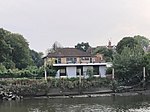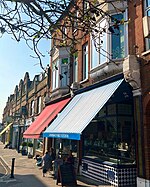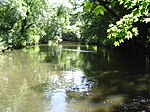The Boathouse, Twickenham
Commercial buildings completed in the 20th centuryHistory of the London Borough of Richmond upon ThamesPanama PapersPete TownshendRecording studios in London ... and 2 more
TwickenhamUse British English from June 2013

The Boathouse is a commercial property located at Ranelagh Drive, Twickenham in England, which housed music and film studios.
Excerpt from the Wikipedia article The Boathouse, Twickenham (License: CC BY-SA 3.0, Authors, Images).The Boathouse, Twickenham
Thames Path - northern Bank, London St Margarets (London Borough of Richmond upon Thames)
Geographical coordinates (GPS) Address Nearby Places Show on map
Geographical coordinates (GPS)
| Latitude | Longitude |
|---|---|
| N 51.46249 ° | E -0.31891 ° |
Address
Thames Path - northern Bank
Thames Path - northern Bank
TW1 1QZ London, St Margarets (London Borough of Richmond upon Thames)
England, United Kingdom
Open on Google Maps










